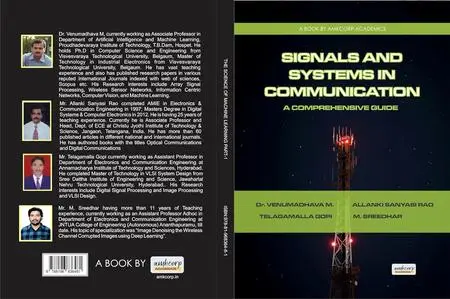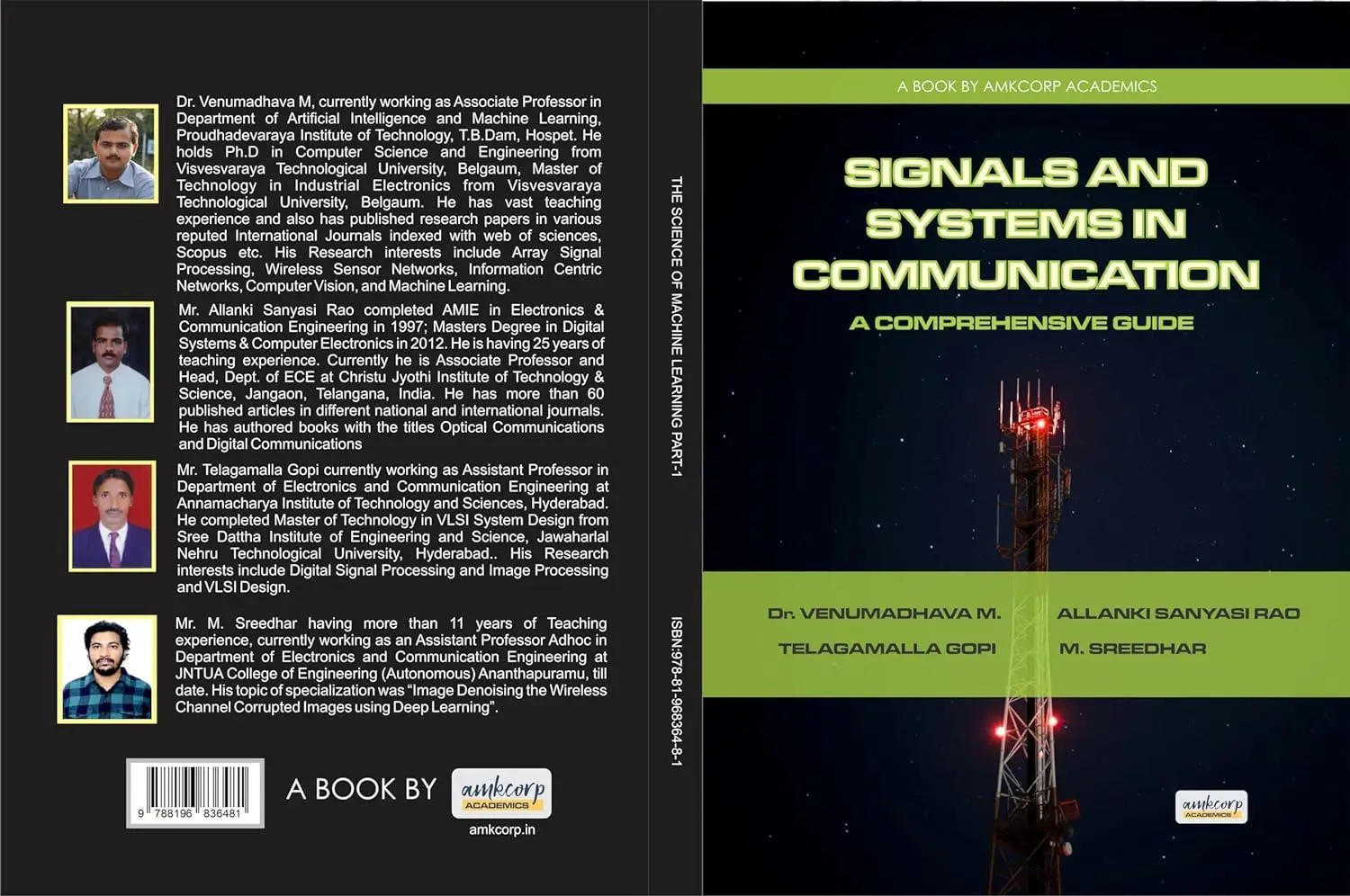SIGNALS AND SYSTEMS IN COMMUNICATION: A COMPREHENSIVE GUIDE
by Dr. VENUMADHAVA M., ALLANKI SANYASI RAO, TELAGAMALLA GOPI
English | March 17, 2024 | ASIN: B0CWF1M55M | 244 pages | PNG (.rar) | 38 Mb
by Dr. VENUMADHAVA M., ALLANKI SANYASI RAO, TELAGAMALLA GOPI
English | March 17, 2024 | ASIN: B0CWF1M55M | 244 pages | PNG (.rar) | 38 Mb
“SIGNALS AND SYSTEMS IN COMMUNICATION: A COMPREHENSIVE GUIDE” offers a comprehensive overview of the fundamental concepts and advanced techniques in the field of communication engineering. With a structured approach, the book is divided into nine chapters, each focusing on specific aspects of signals, systems, modulation techniques, noise analysis, communication systems, transmission models, and information theory.
In Chapter 1, readers are introduced to the basics of communication systems, signals, and systems, laying the foundation for understanding the subsequent chapters. The importance of signals and systems in communication engineering is emphasized, setting the stage for further exploration.
Chapter 2 delves into signal analysis techniques, covering time and frequency domain analysis, Fourier series and transform, and applications of signal analysis in communication systems. This chapter equips readers with the necessary tools to analyze and process signals effectively.
Moving forward, Chapter 3 focuses on linear time-invariant systems, discussing system response, convolution, frequency response analysis, and stability analysis. Understanding LTI systems is crucial in designing and analyzing communication systems.
In Chapter 4, modulation techniques are explored in detail, including amplitude modulation, frequency modulation, phase modulation, and digital modulation schemes. Readers gain insights into how signals are modulated for efficient transmission and reception.
Chapter 5 addresses noise and interference in communication systems, covering sources of noise, signal-to-noise ratio analysis, channel capacity, and interference rejection techniques. Noise analysis is essential for optimizing communication system performance.
Analog communication systems are the focus of Chapter 6, covering modulation techniques, demodulation, noise analysis, and performance evaluation. This chapter provides a comprehensive understanding of analog communication principles.
Chapter 7 shifts to digital communication systems, discussing pulse code modulation, digital modulation techniques, line coding, and error detection/correction methods. Digital communication is vital in modern communication systems.
Transmission and channel models are explored in Chapter 8, covering transmission media, channel capacity, fading, equalization techniques, and error control coding. Understanding channel characteristics is crucial for reliable communication.
Finally, Chapter 9 delves into information theory and coding, covering entropy, source coding, channel coding, and communication channel capacity. Information theory provides insights into efficient data transmission and compression techniques.
With its structured approach and comprehensive coverage, “SIGNALS AND SYSTEMS IN COMMUNICATION: A COMPREHENSIVE GUIDE” serves as an invaluable resource for students, researchers, and professionals in the field of communication engineering. Whether delving into fundamental concepts or exploring advanced techniques, this book equips readers with the knowledge and skills necessary to tackle real-world challenges in communication systems design and analysis.



